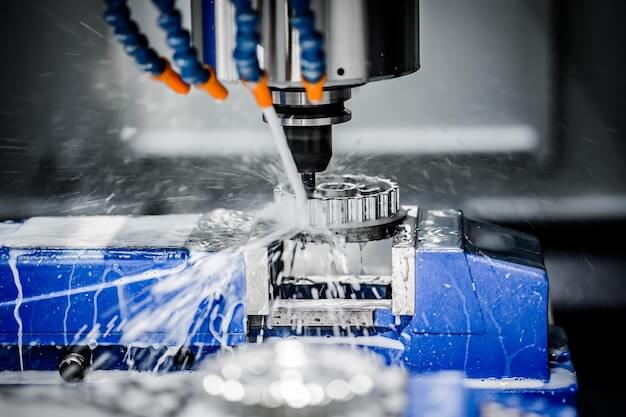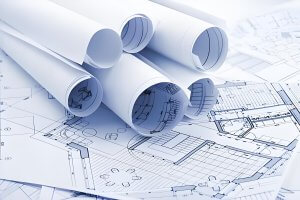Introduction to CNC Machining in the Marine Industry
CNC (Computer Numerical Control) machining stands as a pivotal technology in the marine industry, enabling the precise fabrication of components. This method involves the use of computers to control machine tools, ensuring high accuracy and repeatability. In marine applications, the selection of corrosion-resistant materials is crucial due to the harsh saltwater environment. These materials prevent the rapid deterioration that can occur when metals are exposed to saltwater, thereby extending the lifespan of marine components. For instance, using stainless steel or titanium for parts such as propellers and hull reinforcements can significantly enhance their durability against corrosion.
Understanding Saltwater Corrosion
When considering CNC machining for the marine industry, understanding saltwater corrosion is crucial. Factors such as the location of use for manufactured parts, the need for corrosion resistance in marine or chemical applications, and the selection of suitable materials play a significant role in combating saltwater corrosion.
Common Materials Used in Marine CNC Machining
In the realm of marine CNC machining, selecting materials that resist saltwater corrosion is crucial for the longevity and reliability of components. Among the commonly used materials, each has its unique advantages and drawbacks:
- Stainless Steel: Known for its robustness against corrosion, particularly grades like 316 and 304, which are often used for marine fittings and components. While stainless steel offers excellent resistance to saltwater, it can be relatively expensive and challenging to machine due to its hardness.
- Aluminum: Lightweight and corrosion-resistant, especially when anodized, aluminum alloys such as 5052 and 6061 are favored for marine applications. They provide a good balance of strength and machinability, though they may suffer from pitting corrosion if not properly maintained.
- Bronze: This alloy, particularly in its nickel-aluminum variant, is highly resistant to saltwater corrosion and biofouling, making it ideal for propellers and underwater fittings. However, bronze is heavier and more costly than some other materials, limiting its use to specific applications where its properties are indispensable.
- Titanium: Offers exceptional strength and resistance to saltwater corrosion, making it suitable for critical marine components. Despite its advantages, titanium’s high cost and machining difficulty often restrict its use to high-end or specialized marine applications.
Choosing the right material involves balancing factors such as corrosion resistance, mechanical properties, cost, and machinability to meet the specific needs of marine applications.
Case Study: Application of Corrosion-Resistant Materials in Marine Components
In the marine industry, the selection of appropriate materials for manufacturing components is crucial due to the harsh saltwater environment. A notable example involves the use of CNC machining to produce propeller shafts from duplex stainless steel, a material known for its exceptional corrosion resistance and strength. This choice of material significantly extends the component’s lifespan by preventing the corrosive effects typically induced by saltwater exposure. Duplex stainless steel achieves this through its unique composition, which includes a higher chromium content and the addition of molybdenum, enhancing its ability to withstand pitting and crevice corrosion.
- Material: Duplex Stainless Steel
- Component: Propeller Shafts
- Benefits: Extended lifespan, resistance to pitting and crevice corrosion
- Principle: High chromium content and molybdenum addition improve corrosion resistance
Challenges in Selecting the Right Material for Marine Applications
Selecting the appropriate material for marine applications involves navigating a complex landscape of challenges, primarily due to the harsh environmental conditions at sea. Key factors to consider include:
- Corrosion Resistance: Saltwater is highly corrosive, necessitating materials that can withstand prolonged exposure without degrading.
- Strength and Durability: Materials must endure the mechanical stresses of marine operations, including high pressures and variable temperatures.
- Weight: The material’s weight impacts the buoyancy and fuel efficiency of marine vessels.
- Maintenance Requirements: Materials requiring minimal maintenance reduce operational costs and downtime.
For example, selecting a material for a marine propeller involves balancing these factors to ensure optimal performance and longevity. The material must be strong enough to resist bending or breaking under force, corrosion-resistant to prevent deterioration from saltwater exposure, and light enough to maintain efficient propulsion.
Maintenance and Care for Corrosion-Resistant Components
Maintaining marine components to prevent corrosion is crucial for the longevity and reliability of equipment used in the marine industry. Regular inspections play a vital role in identifying potential issues before they escalate into significant problems. To ensure the durability of saltwater corrosion-resistant materials, consider the following tips:
- Regular Cleaning: Rinse components with fresh water after exposure to saltwater to remove salt deposits that can accelerate corrosion.
- Protective Coatings: Apply anti-corrosive coatings to vulnerable areas as an additional layer of protection against harsh marine environments.
- Anode Installation: Use sacrificial anodes, which corrode in place of the component they protect, thereby extending the life of marine parts.
- Inspection Schedule: Establish a routine inspection schedule to check for signs of wear and corrosion, allowing for timely repairs or replacements.
For example, a marine vessel’s propeller, regularly exposed to saltwater, requires frequent inspections for pitting and corrosion. Early detection and maintenance, such as applying a fresh protective coating or replacing the sacrificial anode, can prevent costly repairs and ensure operational efficiency.
Future Trends in Marine Manufacturing
The marine industry is on the cusp of a revolution, with emerging materials and technologies in CNC machining poised to significantly enhance durability and performance. Key advancements include:
- Composite Materials: The integration of carbon fiber and fiberglass offers superior strength-to-weight ratios, drastically improving fuel efficiency and speed.
- Corrosion-Resistant Alloys: New alloys, such as duplex stainless steel and nickel-based alloys, provide exceptional resistance to saltwater corrosion, extending the lifespan of marine components.
- 3D Printing: Additive manufacturing allows for the creation of complex, lightweight structures that were previously impossible, potentially revolutionizing design flexibility and reducing waste.
These innovations not only promise to improve the longevity and functionality of marine vessels but also open up new possibilities in design and manufacturing efficiency.
Other Articles You Might Enjoy
- CNC Machining for the Marine Industry: Corrosion-Resistant Materials Comparison
CNC Machining in the Marine Industry Computer Numerical Control, more commonly known as CNC machining, is a process that utilizes computers to control machine tools. The significant importance of CNC…
- Optimizing CNC Machining with Hybrid Materials: Benefits and Challenges
Introduction: CNC Machining and the Role of Hybrid Materials CNC machining, short for Computer Numerical Control machining, is a manufacturing process where pre-programmed computer software dictates the movement of factory…
- Aerospace Machining: Definition, Materials & Precision Machining Process
Aerospace machining is a crucial aspect of the aerospace industry, with the global market for aerospace machining services expected to surpass $8 billion by 2026. In fact, aerospace manufacturing is…






